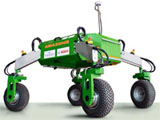Agricultural and Biological Systems Engineering, Department of

Department of Agricultural and Biological Systems Engineering: Faculty Publications
Document Type
Article
Date of this Version
2019
Citation
O’Shaughnessy, S. A., S. R. Evett, P. D. Colaizzi, M. A. Andrade, T. H. Marek, D. M. Heeren, F. R. Lamm, and J. L. LaRue. 2019. Identifying advantages and disadvantages of variable rate irrigation – an updated review. Applied Engineering in Agriculture 35(6): 837-852, doi: 10.13031/aea.13128.
Abstract
Variable rate irrigation (VRI) sprinklers on mechanical move irrigation systems (center pivot or lateral move) have been commercially available since 2004. Although the number of VRI, zone or individual sprinkler, systems adopted to date is lower than expected there is a continued interest to harness this technology, especially when climate variability, regulatory nutrient management, water conservation policies, and declining water for agriculture compound the challenges involved for irrigated crop production. This article reviews the potential advantages and potential disadvantages of VRI technology for moving sprinklers, provides updated examples on such aspects, suggests a protocol for designing and implementing VRI technology and reports on the recent advancements. The advantages of VRI technology are demonstrated in the areas of agronomic improvement, greater economic returns, environmental protection and risk management, while the main drawbacks to VRI technology include the complexity to successfully implement the technology and the lack of evidence that it assures better performance in net profit or water savings. Although advances have been made in VRI technologies, its penetration into the market will continue to depend on tangible and perceived benefits by producers.
Included in
Bioresource and Agricultural Engineering Commons, Natural Resources Management and Policy Commons, Water Resource Management Commons


Comments
Creative Commons CC-BY-NC-ND